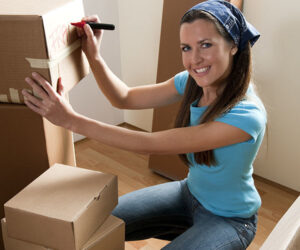There’s more to self storage than putting your belongings in garbage bags and piling them into the unit. Arrange your belongings for easy retrieval and to keep them safe and free from damage.
At West Henly Storage we want to help you have the best possible storage experience.
We’ve gathered a few storage tips to help you pack your unit for easy access, the safety of your belongings, and the optimal use of available space.
- Estimate the number of boxes and containers that you’ll need.
- Determine how much packing material you’ll use. This includes packing paper, bubble wrap, tape, and packing peanuts. Don’t forget markers and labels.
- We sell packing and moving supplies, so we can help with this.
- Create an inventory list and keep copies in a safe place other than your self storage unit.
- Identify which items you may need to access while they are in storage.
- Measure and estimate the collective packing size of the items you plan to store.
- Use furniture pads or pallets to cover the floor under your belongings and raise your items above the floor.
Self Storage Packing Tips
- Be sure your boxes are strong enough to hold 25-30 pounds (don’t overpack).
- Account for extra space to provide ventilation and ease of access.
- Items you frequently use should be placed in the front of your unit.
- Boxes that contain fragile or delicate items should be placed on top of boxes packed with heavier, sturdier things.
- Leave a pathway for easy access to important personal or business documents.
- List contents on all four sides of boxes and seal tightly with good quality packing tape.
- Storing flammable, hazardous, or combustible materials (paint, paint thinner, gasoline, or propane) is prohibited.
- Drain fuel from lawnmowers, snowblowers, trimmers, or any other equipment that you may be storing.
- To keep unwanted pests out of your unit, storing perishable items, such as food or even pet food, is prohibited.
- Wrap large pictures and mirrors in cardboard, mark “FRAGILE,” and stack them end on end against a wall.
- China, crystal, porcelain, and any other breakable items should be carefully wrapped in packing paper and/or bubble wrap and boxes should be marked “FRAGILE.” These boxes should be stacked on top of the heavier items.
- Use empty dresser drawers to store linens and small items. Even fragile items can be stored in drawers if wrapped properly. Wrap valuable linens in acid-free paper to prevent staining or deterioration.
- Stoves, refrigerators, washers, and dryers make excellent packing spaces for blankets, towels, bedding, table linens, and even heavy clothing.
To prevent accidental damage, place TVs and other electronics in the rear of your unit.
- Shovels, hoes, rakes, and hoses can be stored in clean, empty trash cans. You can also stack cans inside each other.
- Sofas and loveseats can be stored on end to save floor space.
- Wrap cushions in plastic furniture covers and place them on top of sofas.
- Cover everything with furniture covers or pads to prevent dust.
- Don’t place sharp or heavy objects on upholstered or leather furniture.
- Wrap furniture legs to prevent damage.
- If you’re storing furniture that can be broken down, keep small parts in plastic bags and tape them to the item.
- Break down tables that have removable legs to save space. Cover with furniture covers or pads to prevent damage.
- Never cover or wrap wood items with plastic. It can leave a residue that causes permanent damage.
- If you store mattresses on their sides, prop them up so that they stand straight. This will prevent them from bending and becoming out of shape and lumpy.
- If you are breaking down a bed frame, be sure to keep all small parts in a plastic bag and tape it to the frame.
- Wipe metal items such as bikes, tables, and tools with machine oil to prevent rust and corrosion.
Create a Map for Easy Retrieval
Make a map of your stored boxes and items, keep it on a digital device or place it on a clipboard, and hang it in a visible location in your unit. It doesn’t have to be perfect; a hand-drawn sketch will work. It will be easier to locate items that are “buried” in the back of the self storage unit.
We hope these self storage tips will improve your storage experience. If you have additional questions, give us a call. We’re always here for you.




